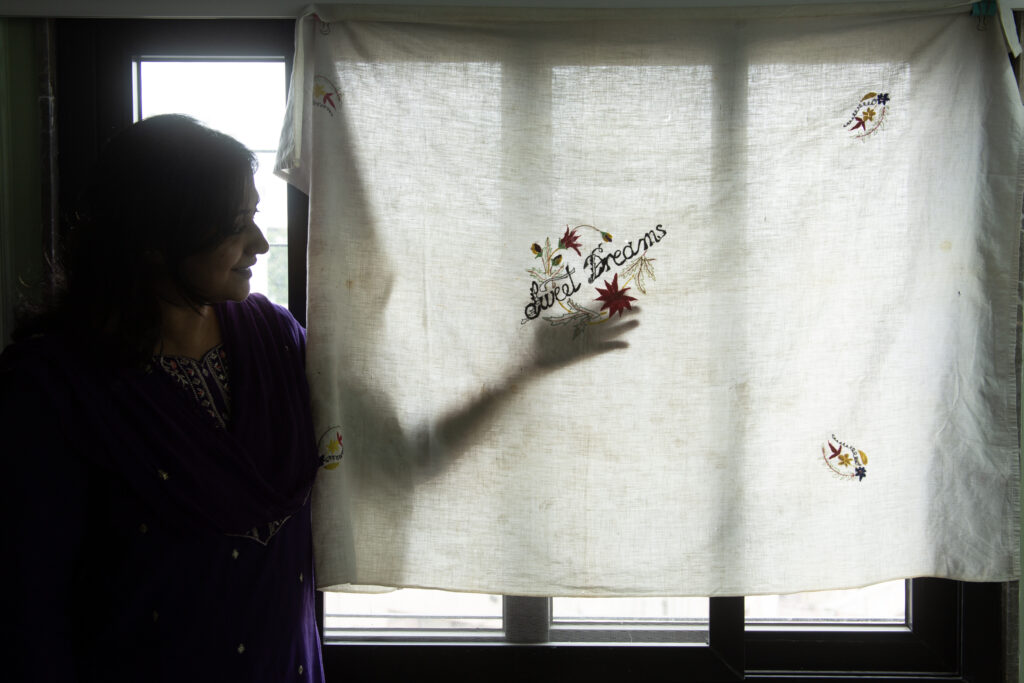TEXT BY DEBOSMITA SAMANTA
PHOTOGRAPHS BY ANJANEYULU G
Hyderabad, Telangana, India
This is a poignant and bittersweet story of Uma Chatterjee (Mukherjee), who was my mother’s paternal aunt, also known as Pishi in Bengali. The details of her life were lovingly narrated to me by dida, my grandmother, Pratima Chatterjee, whose own memories and emotions poured into every word. Uma, affectionately nicknamed Bula, was born in 1948 in Burdwan, West Bengal. She was the youngest daughter, the eighth child in a large family of my great-grandparents, Mrityunjoy Chattopadhyay and Nirmala Debi. As I recount her life, I will refer to her as Bula, as that name brings warmth and familiarity.
Dida began her story with an endearing sentiment: “বুলা তো সবার ভালোবাসার, সবার থেকে ছোটো” (Bula was the most pampered child, being the youngest). From there, she leaped into memories of dadu, my grandfather, Rabindranath Chatterjee, Bula’s elder brother, who was a gold medalist in mathematics and an enthusiastic reader. He served as both a mentor and a strict teacher to all his siblings, including Bula. With a hearty laugh, dida recalled, “বুলা রোজ মার খেত আর আমার কাছে এসে লুকিয়ে যেত” (Bula would get scolded every day and then come to me to hide from dadu).
Bula completed her matriculation from Municipal Girls’ High School and pursued a Bachelor’s degree from Women’s College in Burdwan. She was known for her intelligence, and possessed remarkable skills in needlework, a craft she honed over the years. One of her noteworthy and only remaining creations is a tablecloth made for a school assignment around 1958 or 1959. The white cotton fabric measures 49.5 inches by 34 inches (or 125.73 cm x 86.36 cm) and is embroidered with simple floral designs on all four sides, and the words “Sweet Dreams” in the centre, sewn in delicate colourful threads.
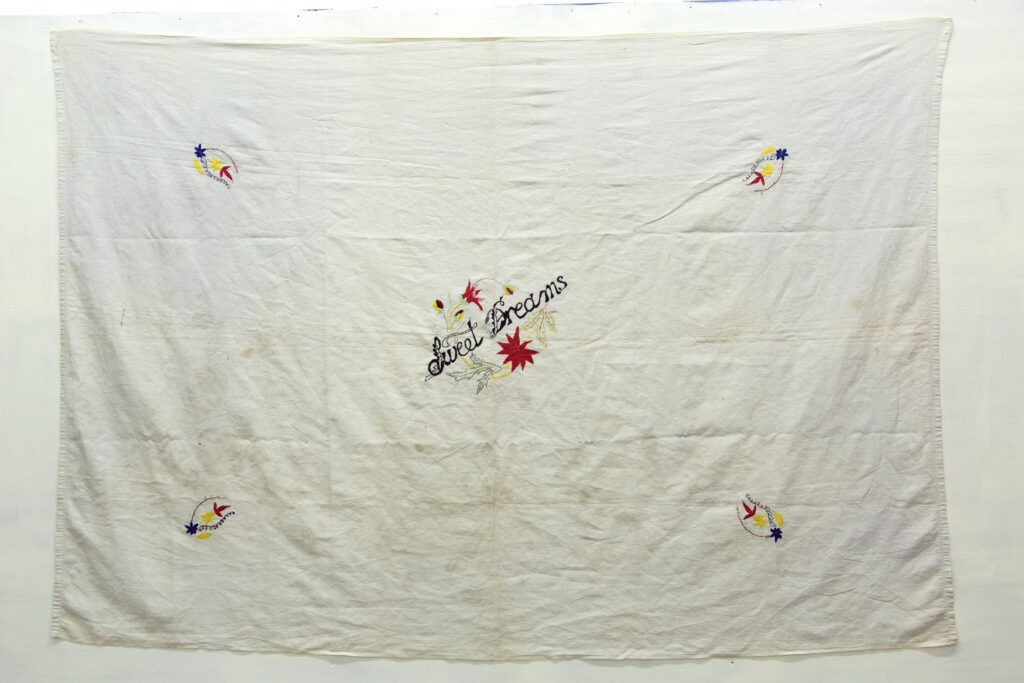
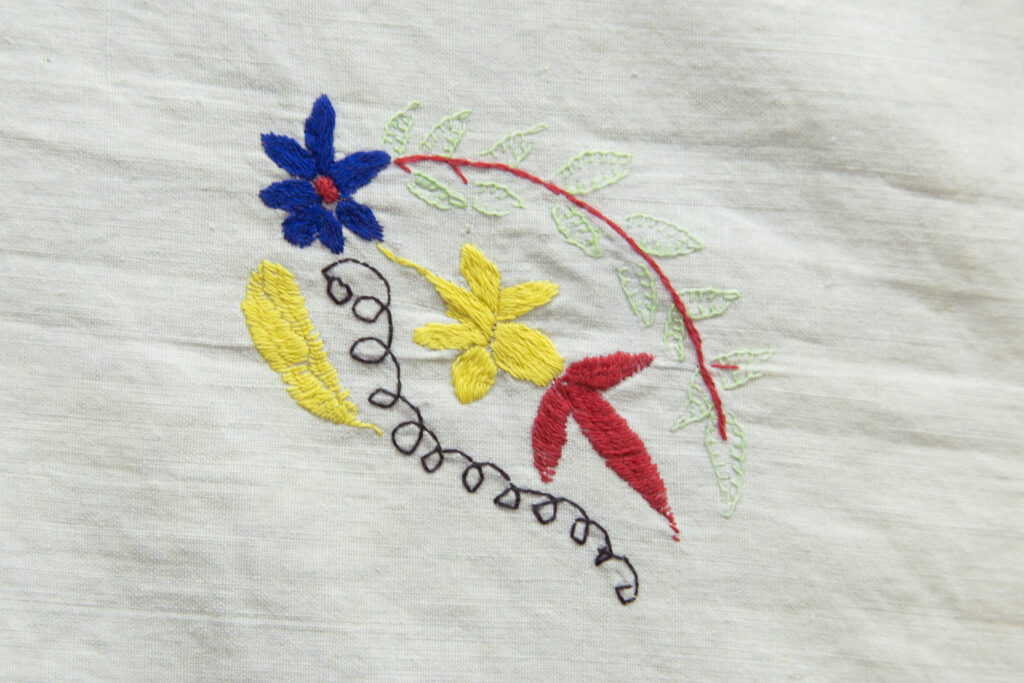
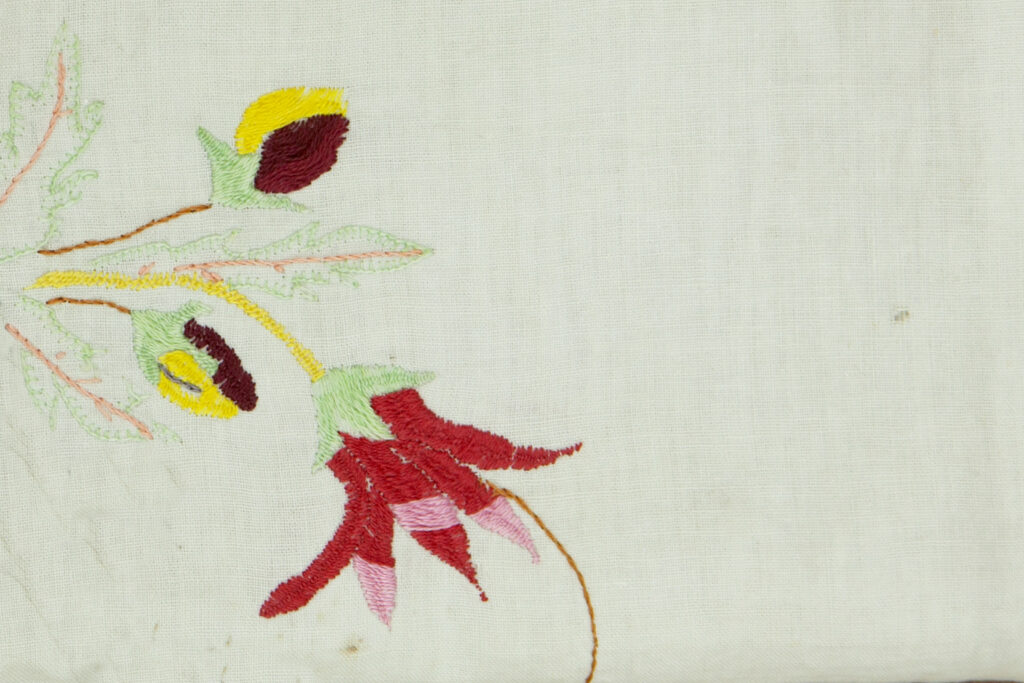
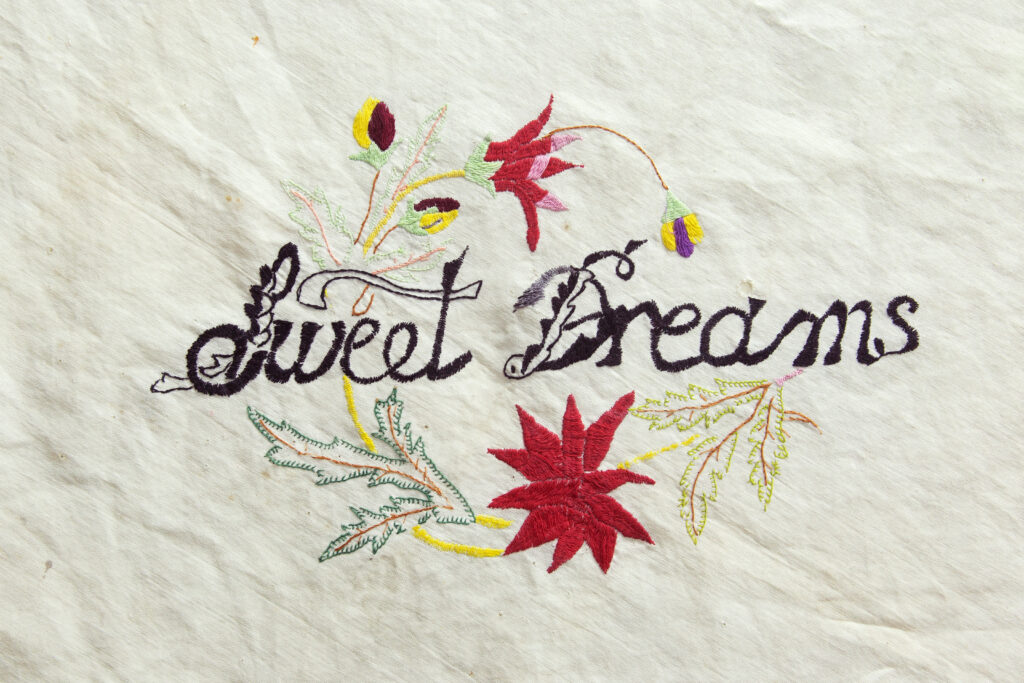
Bula utilized a variety of embroidery stitches like Buttonhole stitch, Stem stitch, Satin stitch (both long and short), Bullion stitch, Back stitch, and French knot, showcasing her creativity and skill. Over the years, the once-pristine cloth has dulled to a yellowish hue, with stains marking its surface. These stains tell silent stories, evidence of a life and a home where the tablecloth was frequently used—for covering small tables, draping over the television, and likely celebrating family gatherings.
Though this tablecloth has always lingered in my childhood memories, I never understood its significance to dida, until a year ago when I visited my hometown. During that visit, I conducted interviews with family members for a painting series I was creating. Amidst these interviews, I discovered the tragic tale of Bula. My heart shattered into pieces as I learned how she was brutally murdered by her mother-in-law in front of her 10-month-old son. Adding to the horror, she was also four months pregnant with her second child at the time of her death. What compounded the disbelief was the chilling fact that no one knew the exact motive behind this horrific act. The Chatterjee family was informed of Bula’s fate only moments before her cremation, under the cover of night, plunging their once-normal life into an unspeakable nightmare.
Discovering the old tablecloth was a strange twist of fate. As I listened to stories of Bula’s remarkable craftsmanship, dida suddenly recalled that she might still possess a tablecloth created by Bula herself. My heart raced at the thought, and a wave of joy washed over me. With a sense of nostalgia, she retrieved a worn, stained fabric from her almirah, frayed yet full of stories. “We’ve cherished this for many years in her memory,” dida said softly. “Though wear and tear have taken their toll, I’ve always washed it gently and kept it safe in my almirah.” In that moment, the tablecloth transformed into a tangible link to Bula, a way for her to remain among her loved ones – her presence in absence.
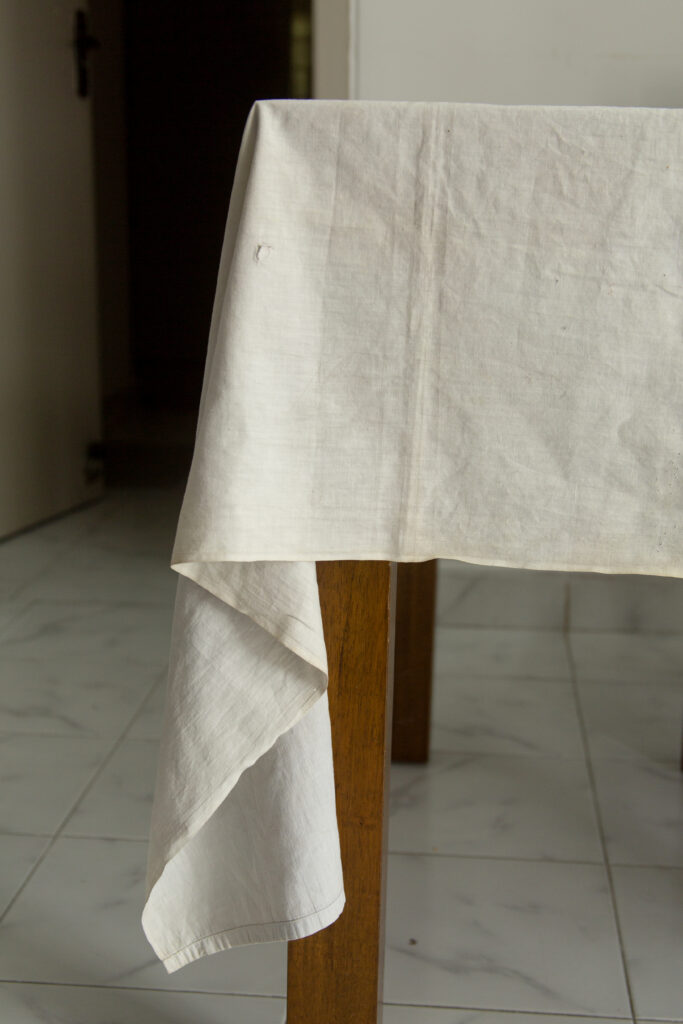
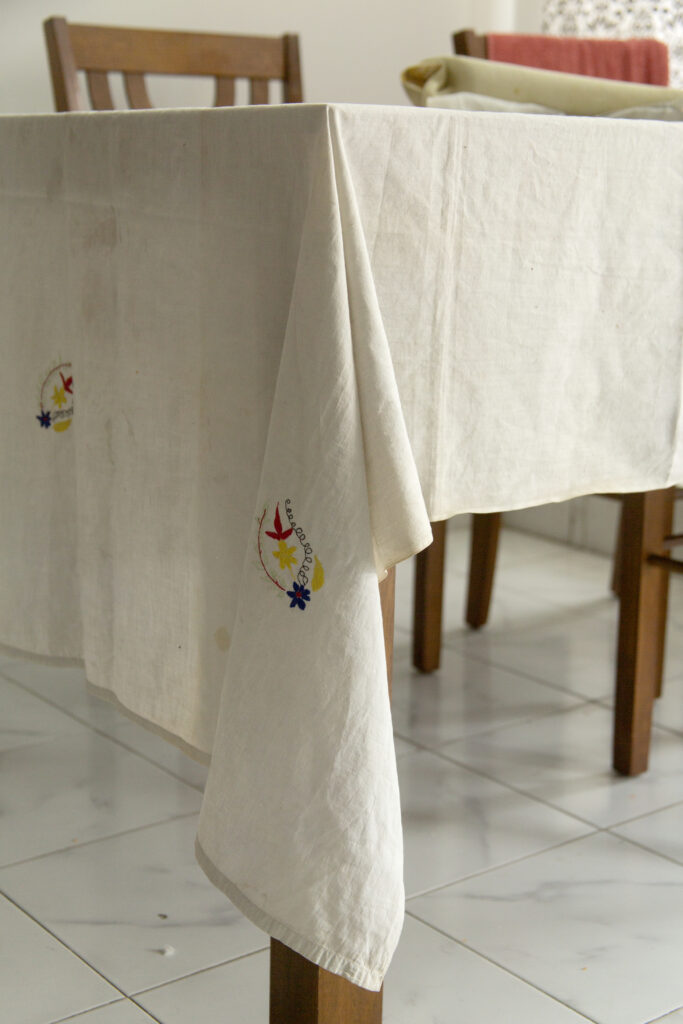
Running my fingers intentionally over the fabric, I was overwhelmed, as if Bula herself were with me. The vibrant threads seemed to transcend time, forming connections between the present and the cherished past. Since bringing the tablecloth to Hyderabad, I have chosen never to wash it again. The folds remain untouched, just as they were when dida handed it to me. To me, that cloth is akin to a closed book; once you delve into it, you uncover a myriad of stories, each stitch brimming with memories waiting to be discovered.
As dida wove the tale of Bula’s life, I found myself conjuring the image of a lively young girl, her eyes sparkling with dreams and aspirations. Then she handed me a family album, its pages filled with a treasure of memories. To my surprise, there were only two photographs of Bula – one from her youthful days and the other taken on her wedding day. The emotional weight of those pictures hit me hard, especially since Bula was the only grand aunt I never had the chance to meet.
I felt a parallel tumult of anger and sadness welling up within. Questions raced through my mind – Why did my great-grandfather feel such a pressing need to marry her off at such a tender age? Bula was educated and undeniably talented; she possessed so much potential that could have enriched the world around her. I understand that marrying young was a common practice in those days, yet I couldn’t help but wonder if she had had the strength to resist, how different things would have been. As I reflected on her life, my heart ached for all the unfulfilled dreams.
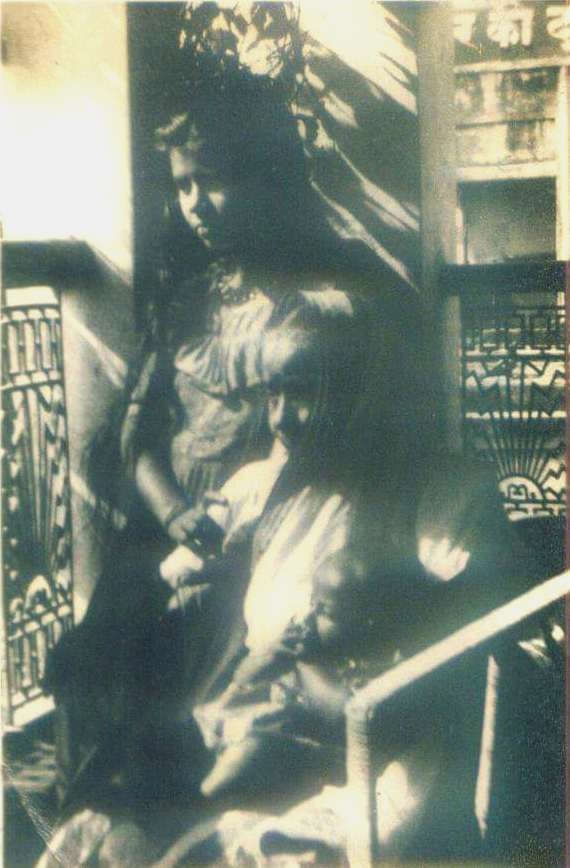
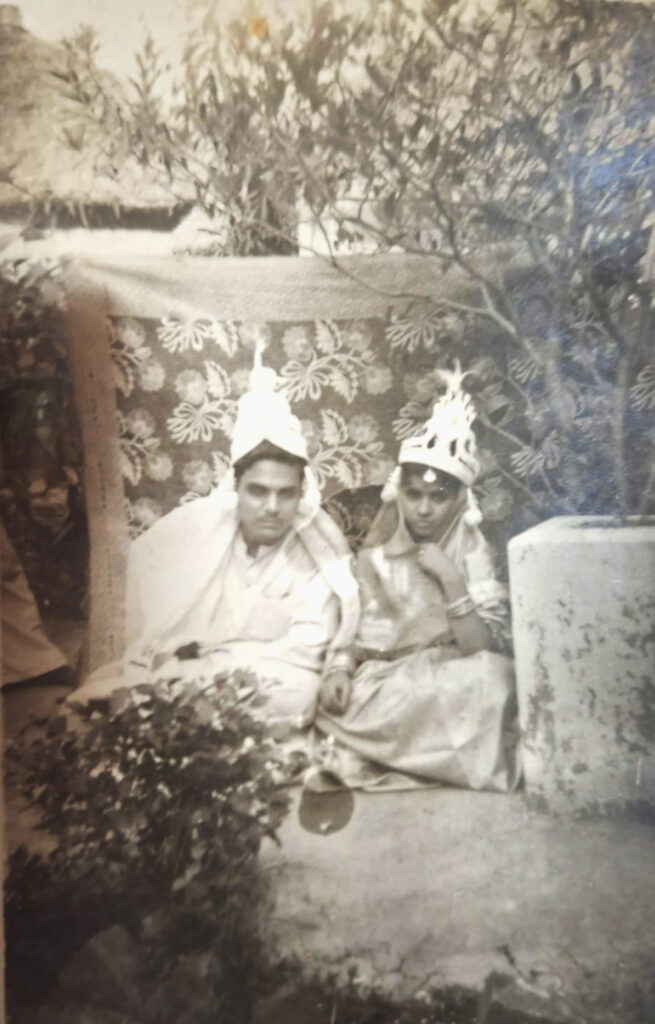
This simple tablecloth has transformed into an emblem of loss and a silent witness to an innocent life snuffed out too soon. Dida’s narration fundamentally altered my perspective on Bula’s life and legacy. The phrase “Sweet Dreams,” once innocently embroidered now resonates as a haunting metaphor. It raises innumerable questions in my mind: Did Bula have a premonition of her tragic fate, or did she stitch her dreams and aspirations into this fabric, hoping to preserve them against the harsh realities of her life?
Although I never met Bula, I feel a profound connection to her through the sentiments shared by my family. She speaks to me more eloquently than many I know. Her story serves as a stark reminder of the precariousness of women’s safety, both inside and outside their homes. She passed away at the age of 21 around 1969, and as I sit here, five and a half decades later, in 2025, reflecting on her life and the lives of countless women like her, I realize how little has changed in our society. The threads that once stitched Bula’s dreams together now bind her story to our ongoing struggle for safety, dignity, and justice for women everywhere.
